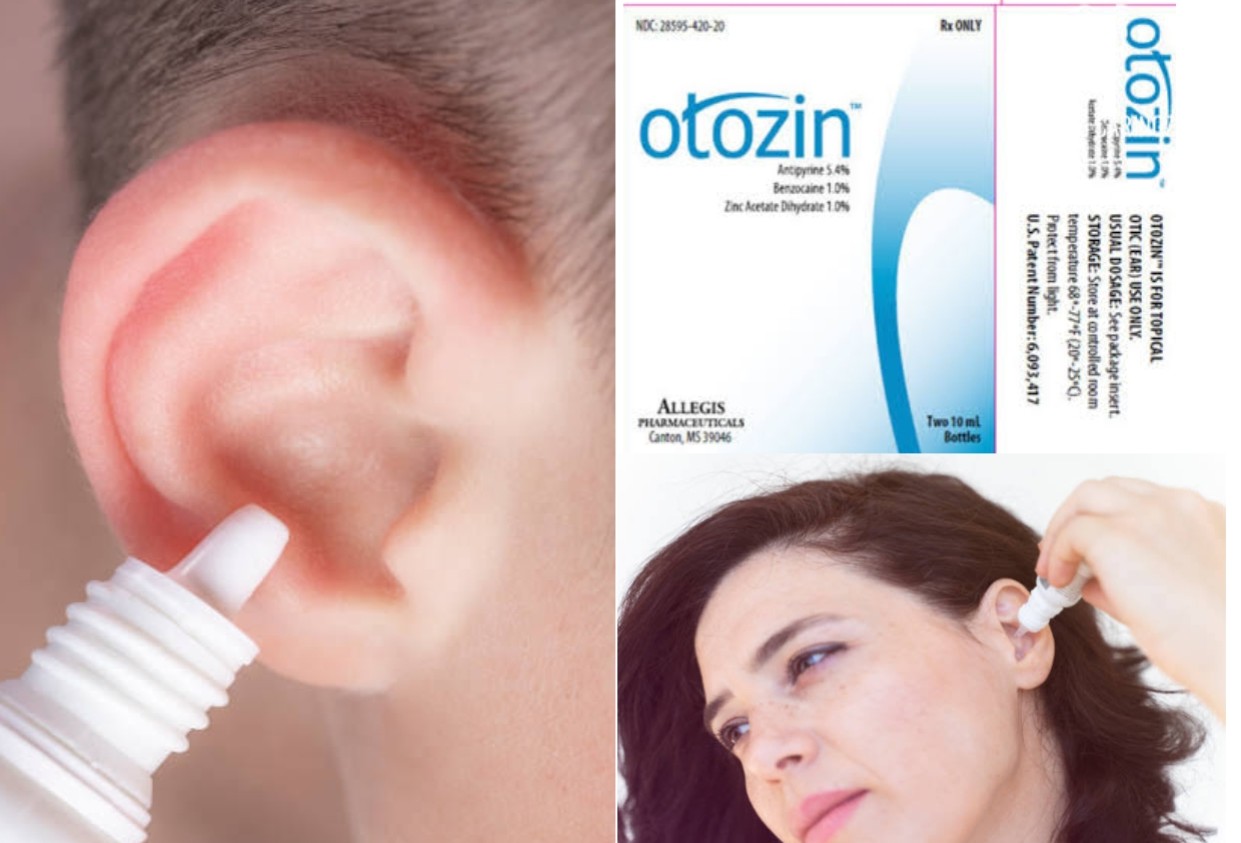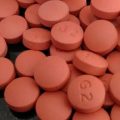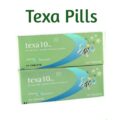What is Otozin?
Otozin is a combination ear drop containing antipyrine, bemzpcaome, and zinc acetate dihydrate. It is used to ease pain, swelling, and pressure linked with some ear infections. Otozin is used to soften earwax so it may be taken out.
Otozin is supplied as a clear liquid delivered in 2 white dropper bottles containing 10 mL each as a single prescription package Each 1 mL for otic administration contains:
| Antipyrine | 54 mg |
| Benzocaine | 10 mg |
| Zinc Acetate Dihydrate | 10 mg |
Also contains acetic acid, propylene glycol, glycerin, purified water, and vitamin E polyethylene glycol 1000 succinate.
Antipyrine is an antipyretic and analgesic. Antipyrine occurs as a colorless, almost odorless, crystalline powder or tabular crystals having a slightly bitter taste. It is very soluble in water and freely soluble in alcohol. Antipyrine is an antipyretic agent used for the symptomatic treatment of acute otitis media, most commonly in combination with benzocaine.
Antipyrine is thought to act primarily in the CNS, increasing the pain threshold by inhibiting both isoforms of cyclooxygenase, COX-1, COX-2, and COX-3 enzymes involved in prostaglandin (PG) synthesis
Benzocaine is a short-acting local anesthetic. Benzocaine occurs as a white, crystalline powder. Benzocaine is used to reduce pain or discomfort caused by minor skin irritations and many other sources of minor pain on a surface of the body. Benzocaine is also used to numb the skin or surfaces to lessen the pain of inserting a medical instrument such as a tube or speculum.
Zinc acetate in the dihydrate form is a salt of zinc and a topical skin protectant generally recognized as safe and effective. Zinc acetate dihydrate occurs as white crystals or granules, is freely soluble in water and in boiling alcohol and is slightly soluble in alcohol.
Otozin combines the analgesic action of antipyrine and benzocaine with the skin protectant zinc acetate to relieve pressure, reduce inflammation and congestion, protect the skin, and alleviate pain and discomfort in acute otitis media.
Benefits of Otozin
For acute otitis media of various etiologies
- Otozin provides prompt relief of pain and reduction of inflammation in the congestive and serous stages.
- Adjuvant therapy during systemic antibiotic administration for resolution of the infection.
Because of the close anatomical relationship of the Eustachian tube to the nasal cavity, otitis media is a frequent problem, especially in children in whom the tube is shorter, wider, and more horizontal than in adults.
For The removal of cerumen
- Otozin facilitates the removal of excessive or impacted cerumen.
How to use Otozin
You may warm the Otozin ear drops to body temperature (37 °C or 98.6 °F) by holding the bottle in your hand for a few minutes before applying the drops.
To use:
- Lie down or tilt the head so that the affected ear faces up. Gently pull the earlobe up and back for adults (down and back for children) to straighten the ear canal. Drop the medicine into the ear canal. Keep the ear facing up for about 5 minutes to allow the medicine to coat the ear canal. (For young children and other patients who cannot stay still for 5 minutes, try to keep the ear facing up for at least 1 or 2 minutes.) A sterile cotton plug may be moistened with a few drops of this medicine and gently placed at the ear opening for no longer than 5 to 10 minutes to help keep the medicine from leaking out. If you have any questions about this, check with your doctor.
- To keep the medicine as germ-free as possible, do not touch the dropper to any surface (including the ear).
- Do not rinse the dropper after use. Wipe the tip of the dropper with a clean tissue and keep the container tightly closed.
If you are using this medicine to help remove earwax, the ear should be flushed with warm water after you have used this medicine for 2 or 3 days. This is usually done by your doctor. If you have been directed to flush the ear out yourself, make sure that you have learned how to do it correctly. Follow the instructions carefully.
Dosing
The dose of Otozin will be different for different patients. Follow your doctor’s orders or the directions on the label. The following information includes only the average doses of this medicine. If your dose is different, do not change it unless your doctor tells you to do so.
The amount of Otozin that you take depends on the strength of the medicine. Also, the number of doses you take each day, the time allowed between doses, and the length of time you take the medicine depend on the medical problem for which you are using the medicine.
- For otic dosage form (ear drops):
- Adults and children:
- For ear pain caused by an infection—Use enough medicine to fill the entire ear canal every one or two hours until the pain is relieved.
- For softening earwax before removal—Use enough medicine to fill the entire ear canal three times a day for two or three days.
- Adults and children:
Missed Dose
If you miss a dose of this medicine, take it as soon as possible. However, if it is almost time for your next dose, skip the missed dose and go back to your regular dosing schedule. Do not double doses.
What Are The Side Effects of Otozin?
Rarely, side effects of Otozin include:
- Burning
- Stinging
- Redness
- New pain in or around the ears.
Tell your doctor if you have rare but very serious side effects of Otozin including:
- Bluish skin, or
- Severe tiredness or weakness.
Contraindications
This product is contraindicated in any person with hypersensitivity to any of the components or substances related to them. This product is contraindicated in the presence of spontaneous perforation of the tympanic membrane or discharge.
Pregnancy Category C
Animal reproduction studies have not been conducted with Otozin. It is also not known whether this product can cause fetal harm when administered to a pregnant woman, or can affect reproduction capacity. This product should be given to a pregnant woman only if clearly needed.
Nursing Mothers
It is not known whether Otozin is excreted in human milk. Caution should be exercised when this product is administered to a nursing woman.
Storage
Store the medicine in a closed container at room temperature, away from heat, moisture, and direct light. Keep from freezing.
Keep out of the reach of children.
Do not keep outdated medicine or medicine no longer needed.





